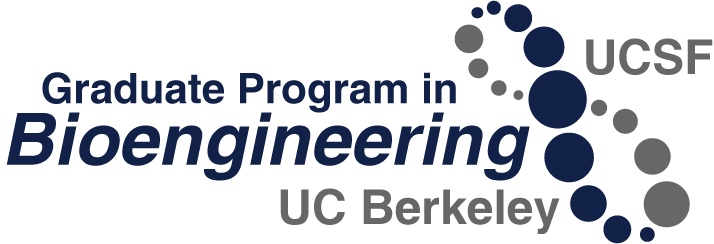
Timothy Mills,1986 – our second Ph.D. graduate – spoke with us about his career from academia to venture capital, and memories of the early Bioengineering Graduate Program.
I graduated from the University of Colorado in 1980 and was very interested in bioengineering, but there weren’t a lot of formal programs available. Stanford had a work/school co-op program I joined, and took as many BioE courses as they had. I was working for ROLM Corporation on early digital telephony technology, as was Marty Graham, Professor of EECS at Berkeley. He was also very interested in bioengineering and told me that they were putting together a bioengineering Ph.D. program, joint between UCSF and Berkeley.
I started in 1982, and I think I started as a transfer to EECS from Stanford, then changed majors to BioE when the program was established.
What was so great about the program was that you could do pretty much whatever you wanted, as long as you found a professor who would take an interest and help you formulate a program.
My interest was in noninvasive diagnostics. I did my thesis on speeding up the imaging sequence in MRI by changing the flip angle. I studied MR spectroscopy, which has very strong signals if you image fast and use an angle of less than 90 degrees, and found an analog in 3d imaging.
The really amazing thing was that the radiology department had an imaging lab in South San Francisco with a half dozen or so actual imagers. This allowed me as a grad student to have a whole imager at my disposal to work on, to develop and customize the systems, to do 3D imaging analysis and come up with optimal flip angles.
It was mind blowing for a grad student to be linked in to the whole spectrum, from theory to hardware to imaging actual patients and seeing results.
The early days were incredibly exciting for students and faculty. There was some reservation in some of the faculty and deans of the schools to really understand how the interdisciplinary program could be synergistic with their departments, and to their credit they pulled it off and moved through the process really early on. Other institutions took a decade longer to sort out those same concerns that Berkeley and UCSF faculty and students had. That willingness to bite back the fear and move forward was a real credit.
You could feel the excitement in the faculty, they were clever enough and smart enough to know that there was great opportunity if they were persistent. As a student I was energized by that openness and willingness. The ability to have both of the campuses, both medicine and engineering, as your playground was exciting and a memory I’ll never forget.
After graduating in 1986 I took a faculty position at UC Irvine Medical Center in surgery. That was an unexpected place for an electrical engineer, but there was a young cardiac transplant surgeon who had read my MR papers and wanted to hire me. I’d helped with some work at Irvine looking at different pulse sequences to try to do spectroscopy of the cardiac septum to noninvasively diagnose early rejection of heart transplants. The surgeon felt that he needed a bioengineer. So I became director of the artificial heart program, and began working in transplant surgeries on cardiac support. I was also working with the cardiology department and a company, working to provide circulatory support to high risk angioplasty patients.
It was a very, very interesting position for me for several years. I had planned to stay in academics, as I really enjoyed working with students, the university, and with companies on early prototyping.
After about four years, I got a strange call from Baxter Healthcare’s Interventional Cardiology division; they hired me away to run business development for their cardiac business. That was really a crossroads in my career. It opened up my experience to the business of product development for the medical field as well as how these technologies needed to interact with medicine.
That work was a very fast-paced learning curve for about four years. I was running European clinical trial networks, supervising R&D engineers, regulatory people, a marketing group, a development group, and writing trial protocols. It was a very exciting time.
Then I got a call from another Baxter division asking me to work with a little company with a great idea. Initially I wasn’t interested, but eventually I moved to Target Therapeutics as CTO and Vice President of Corporate Development. We became the world leader in new ways to treat cerebral aneurysms. I was able to use almost all of my techniques and technologies from cardiology, catheters, and electrical engineering to help aneurysms heal faster.
In about four years the company sold to Boston Scientific for over $1 billion. In that time we had spun out three companies into the venture community with other technologies. That led me to move into venture work, and I joined Sanderling Ventures in 1998, where I’m now a managing director and owner.
I think that what was and is so impressive about bioengineering is that the true developments that you see happening in medicine aren’t done by technicians or by biologists alone, they are done by a mixture of disciplines.
To have a program that almost requires students to understand and work across those boundaries, and to develop the skills to make that happen, is a huge credit to the joint program that we should be proud of.
